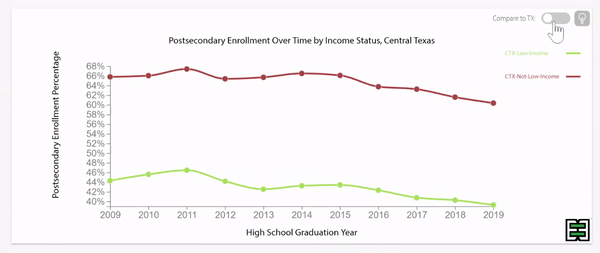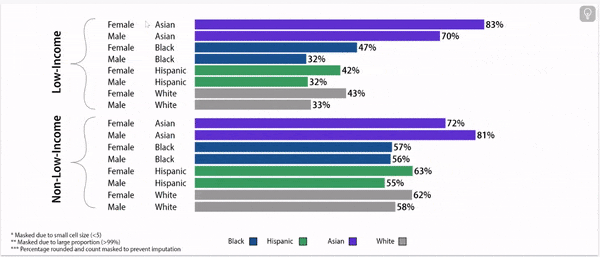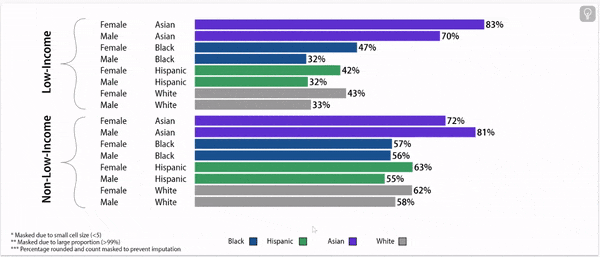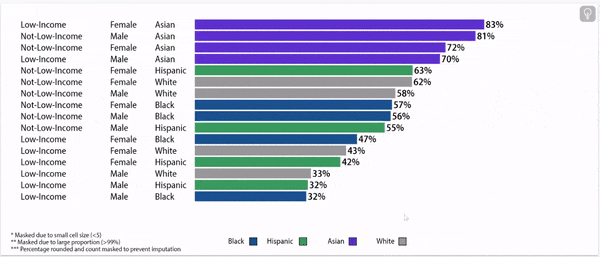Dropouts Profile
2021-22
7%
1,041 / 14,286
El Paso
Dropout Rate
2021-22
6%
25,101 / 403,108
Texas
Dropout Rate
Despite fluctuations, Texas dropout rates have remained largely unchanged.
Disparities exist when comparing dropout rates across household income status in Texas.
Despite fluctuations, disparities in dropout rates by household income status have remained largely unchanged in Texas.
Dropout rates vary by race/ethnicity in Texas.
Despite fluctuations, disparities in dropout rates by race/ethnicity have remained largely unchanged in Texas.
Dropout rates vary by emergent bilingual status in Texas.
Despite fluctuations, disparities in dropout rates by emergent bilingual status have remained largely unchanged in Texas.
Digging deeper: dropout rates vary by household income status, gender, and race/ethnicity.
Dropout Rate, 2022
About this data:
E3 Alliance relies primarily on data from the University of Texas Education Research Center (ERC). This data allows for a longitudinal understanding of dropout rates based on where and when a student attends high school. This data pertains to high school students who were enrolled within the state of Texas for any grades 9-12, excluding students who left the Texas public education system for reasons other than dropping out.
Following are items to note:
The year of the data represents the year of high school graduation. A student is defined as having dropped out if the student did not return to public school in the fall following the expected graduation date, was not expelled, and did not: graduate, receive a GED, enroll in higher education, or die. There is a delay in data availability due to state approval within the ERC and analysis time. As such, if you choose to explore data from Central Texas, the graphs below present dropout data in the most recent available year in Texas schools.
Outcomes that reference data from 2021, 2022, or 2023 do not include San Marcos CISD, due to a data discrepancy.





